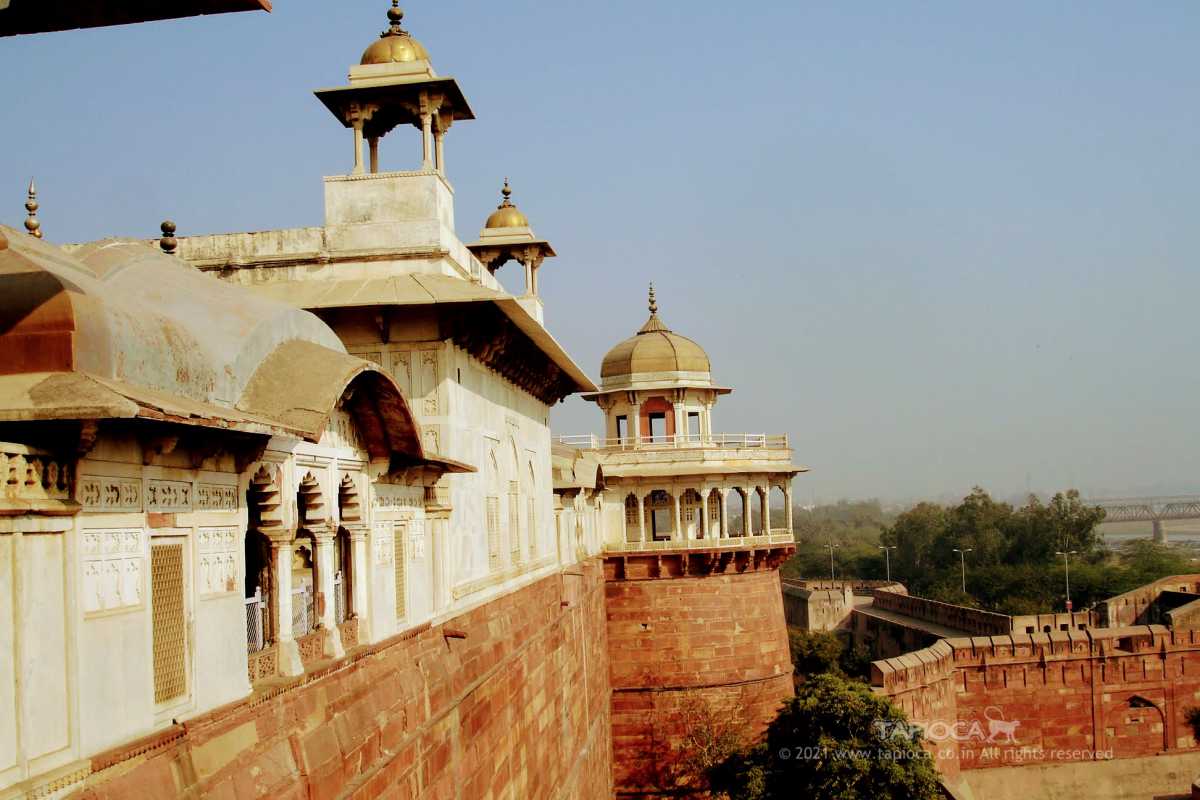Shah Jahan

Shah Jahan
Shah Jahan
H
e was the fifth Mughal emperor of India who is more known for his architectural masterpieces the world has ever seen.True to his name Shah Jahan or ‘King of the World’, he was one of the greatest Mughals whose reign was known as the ‘Golden Age of Mughals’. He had an empire that spanned across almost 30 lakhs km and contained one of the biggest and most prosperous capitals of the world. Though he was one of the legendary rulers of the Mughals, he is most notably known for the construction of the world famous TAJ MAHAL.
Birth and Childhood
Born as Prince Khurram in 1592 in Lahore, he was the third and most favourite son of emperor Jehangir. He was the only son of Princess Manmati, the wife of Princess Jehangir who was a Rajput by birth. He was everyone’s favourite during his childhood and was named ‘Shah Jahan’ the Magnificent by The Great Akbar. He was involved in his early ages in a wide and broad level of education and was well trained in martial arts. By around the age of 23, he took over as a military commander for his father’s troops and won many territorial conquests and was instrumental in expanding Jehangir’s territory.
His Rule & Death
Followed by the favoritism towards his youngest brother by his step mother Noor Jahan, Shah Jahan revolted against Emperor Jehangir for the throne. He led an open revolt against his father though his forces were defeated and he was forced to submit himself unconditionally.
After the death of Jehangir in 1627, he assumed the throne as an emperor and this initiated his 30 long years of rule. After becoming the Emperor of the Mughal Empire officially, he assumed the title Abul Muzaffar Shahbuddin Muhammad Sahib-i Kiran-i Sani though was known more popularly by the name ‘Shah Jahan’.
He executed all his rivals and imprisoned his stepmother Noor Jahanas soon as he came to power to eliminate any kind of contention in his rule. After a 30 year period of unparalleled rule, he was succeeded by his son Aurangazeb when he fell sick and was kept under house arrest till his death in the Agra fort.
The Mughal Empire under the rule of Shah Jahan
Shah Jahan was one of the best rulers of the Mughal Empire and it is a must to mention that India grew to become a center of arts, crafts and architecture during his period. During his reign, India flourished with the best of architects, painters, craftsmen, writers and artisans. Notable architectures and work of literature have been created during his rule and his capital became one of the world’s most prosperous city in the world. The magnificent building and artworks constructed in his court was always a reason for tourists and ambassadorsfrom various parts of the world. The Taj Mahal and the Peacock Throne were architectural masterpieces of his 30 years long rule.
The Emperor during his rule ensured that the Mughal Empire attained its highest union of strength and magnificence and stretched the borders to huge dimensions. He also possessed a strong military force unlike his father which gave way during Jehangir’s last days to various political rebellions. The Mughal army during Shah Jahan’s rule became a military machine and the number of nobles increased considerably in the country. The land revenue collected by the Empire during his rule was greater than any other ruler. Commerce and trade flourished during his empire which opened new centres for trade in Delhi, Agra, Lahore and Ahmadabad and this also enabled establishment of well-linked roadways and waterways.
The ‘Architect’ in him From the age of 16, he has impressed people with his architectural talent. The re-design of buildings inside the Agra Fort and the quarters that he built for himself inside Babar’s Kabul fort was the start for his architectural journey. These along with his other magnificent works like Taj Mahal and the Pearl Mosque earned him the title, “The builder of Marvels”.
The most famous of all his constructions was the legendary monument, Taj Mahal. He built this as a memorial for his wife, Mumtaz Mahal. Other notable structures that he created include the Pearl Mosque, Jama Masjid, Moti Masjid and other fabulous buildings inside the Red Fort in Agra.
The Delhi Palaces and many great mosques in Delhi, Lahore and Thatta are a true example of his love for architecture. He also designed many buildings inside the Lahore Fort which is currently in Pakistan including the Wazir Mosque in Lahore.
The Shalimar Gardens built by him in Lahore is known for its beautiful design which accommodates about 400 fountains in it. He established and ruled the most prosperous capital of the world at his time, Shahjahanabad (now known as Old Delhi) and was responsible for its complete design. He was also responsible for the creation of important building namely the Diwan-i-Am and the Diwan-i-Khas inside Delhi Fort.
He was the possessor of the world renowned and celebrated luxury throne, The Takht-E- Shahanshah-E-Hindustan or the Peacock Throne whose worth is estimated to be about millions of dollars. It is believed that the throne was built by him to celebrate his rule. The throne is areal beauty with its sparkling colours reflected by the dazzling rubies, emeralds and sapphires that adorned it. During his reign, a very famous celestial globe was produced near Thatta in the Sindh province. This seamless celestial globe was produced by a Sindhi Astronomer, Muhammad Salih Tahtawi with many Arabian and Persian inscriptions on it.
This globe was discovered by Emilie Savage Smith who was amazed at the globe as production of seamless spheres was considered impossible without modern technique and processes.
Marriage
The emperor Shah Jahan had three marriages throughout his lifetime and he was most attached to his last wife, Arjumand Banu Begum. The emperor was married to Akbarabadi Mahal and Khandahari Mahal also though his relation with them was described in the Qazwini as “just in the levels of maintaining the status of marriage”.
Shah Jahan married Arjumand Banu Begum in 1607 when he was fifteen years old. He was soimpressed by her beauty and character that he named her Mumtaz Mahal meaning the “Jewel ofthe Palace”. He was so deeply involved in the relation with Mumtaz Mahal which is regarded as almost about 1000 times more than what he had for his other wives.
Shah Jahan and Mumtaz were so deeply in love that she traveled with him on all his military campaigns and other tours in spite of her frequent deliveries. They together had 14 children and she shared a very deep and intense relation with him. She was known to be his perfect wife who assisted him in many issues and was his constant and confident companion. She was completely devoted to him and was described as one who had no political aspirations. This was very different from her aunt and Shah Jahan’s stepmother Noor Jahan who had a strong influence on Jehangir’s political reign.

Aurangzeb imprisoned Shah Jahan here till his death.
This balcony overlooks Taj Mahal located across the river
